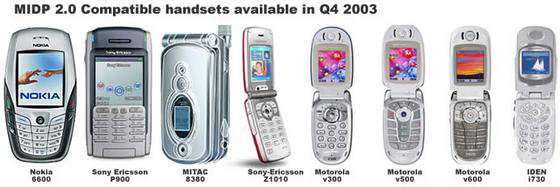
|
|
|
|
|
|
|
|
|
|
|
|
|
|
|
|
DOWNLOAD
During the beta release phase we have only included the application for download. We are currently making arrangements to release the source code under a GNU Public License.
Requirements

- Mobile device that supports MIDP 2.0
(full list of MIDP handsets currently available - with more released everyday)
- Java J2ME support
(list of J2ME mobile phones)
- Bluetooth device hardware
Application Download
We have tested the application on the Nokia 6600 and will have reports for other phones shortly. Please report any problems you experience on Nokia phones. You will need to download the two files below:
- Jabberwocky.jar (Version 0.1b)
- Jabberwocky.jad (Version 0.1b)
A new (and of course improved) version is being released in May 2004. Please stay tuned by subscribing to the Urban Atmospheres mailing list.
Installation Instructions
The actual installation and use of the Jabberwocky application is very straightforward. Users with MIPD2.0 (Mobile Information Device Profile) enabled mobile phones can download and install the freely available Jabberwocky application. Simply copy the files onto your device using a cable, IrDA, or Bluetooth and select the Jabberwocky.jar file for instilation. We are also developing an over the air programming updating model as well as using MMS for application distribution. Details on those methods will appear shortly.
License
The Jabberwocky application as well as all research materials, processes, and results of brainstorming around the project are released openly and freely to everyone through the web. This includes copies of surveys used in urban studies of people and place as well as a number of early prototype designs. All are freely available online. We believe strongly in open dialogue and open collaboration of resources. We are uninterested in social networking projects that conceal their development or restrict access. The health of our urban landscapes is too important in this moment of technological sprawl to not involve actual urban inhabitants and users.
We are currently making arrangements to release the source code under a GNU Public License.
Urban Atmospheres at Intel Research